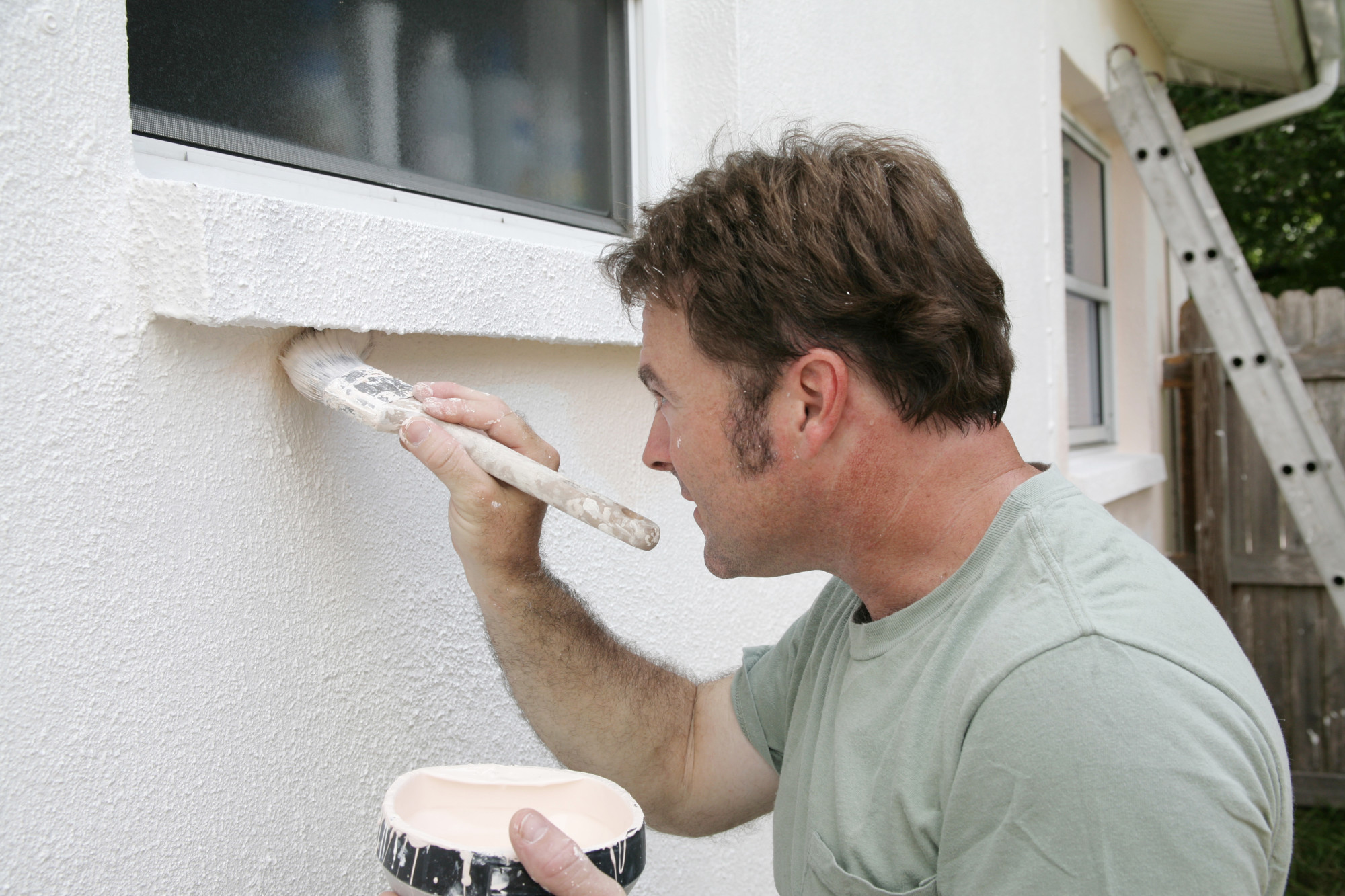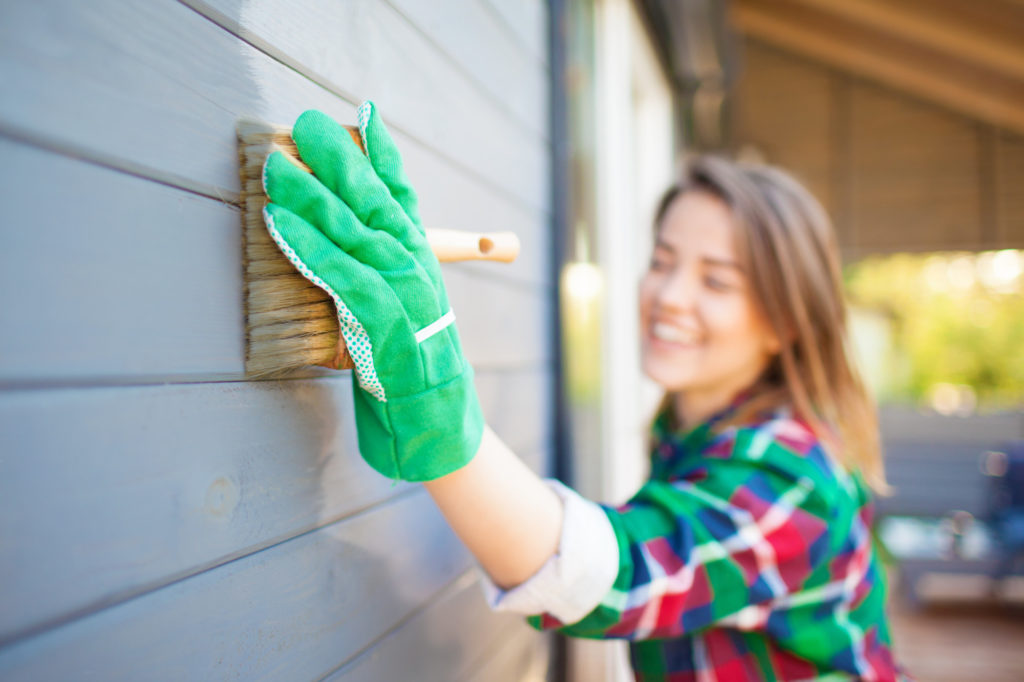
How Much Does it Cost to Paint the Exterior of a House?
If you do it yourself, you can paint the exterior of a house for around $1200, or if you hire a painting company you will invest upwards of $4.03 – $7.12 per sq ft. Either way, the labor time will easily run you a few days.
Painting the exterior of your house is an excellent way to improve its appearance, protect its surfaces, and boost its value. When planning this project, one of the main factors to consider is cost. This article will explore the cost to paint the exterior of a house, breaking it down by cost per square foot and labor costs. Additionally, we’ll answer some common questions related to the topic.
Cost of Exterior House Painting Per Square Foot
The cost per square foot for exterior painting varies depending on several factors, such as the type of paint used, the condition of the surfaces, and the location of the project. On average, the cost is around $6.11 per square foot. Here’s a breakdown of the factors that can affect the cost per square foot:
- Paint Type: Premium quality paints will cost more, but they often provide better coverage and longer-lasting results. Low-quality paints may be more affordable, but they might require more coats and frequent touch-ups.
- Surface Condition: The condition of your house’s exterior surfaces can impact the cost. If the surfaces are in poor condition and require extensive preparation, such as scraping, sanding, or filling cracks, the cost per square foot can increase.
- Location: The cost of exterior painting varies by region, as factors like local labor rates and weather conditions can impact the cost of materials and labor.
Cost for Labor
Labor costs typically account for the majority of the total cost of an exterior painting project. Labor rates can range from $20 to $50 per hour, depending on the experience and expertise of the painter. The total labor cost will depend on factors like the size of your house, the complexity of the project, and the amount of preparation work required.
Some factors that can affect labor costs include:
- Size and Complexity: Larger homes with more intricate architectural features or multiple stories will require more time and labor to paint. This can increase the total labor cost of the project.
- Preparation Work: If your home requires significant prep work, such as removing old paint, repairing damaged surfaces, or power washing, this will increase the labor cost.
- Scaffolding and Equipment: Painting a multi-story home may require the use of scaffolding or specialized equipment, which can increase the overall labor cost.
Frequently Asked Questions
- How often should I paint the exterior of my house?
The frequency at which you should paint your house depends on factors like the climate, the quality of the paint, and the condition of the surfaces. In general, it’s recommended to paint the exterior of your house every 5 to 10 years.
- How can I save money on exterior painting?
To save money on exterior painting, consider choosing a more affordable paint option, doing some of the preparation work yourself, or getting multiple quotes from different contractors to find the best price. However, keep in mind that choosing a lower-cost option may compromise the quality and longevity of the paint job.
- What’s the best time of year to paint the exterior of my house?
The best time to paint the exterior of your house is typically during the spring or fall when temperatures are moderate and humidity is low. Painting in extreme temperatures or high humidity can negatively impact the paint’s ability to adhere and dry properly.
The cost to paint the exterior of a house depends on factors such as the cost per square foot, labor costs, and the condition of the surfaces. By understanding these factors, you can make informed decisions when planning your exterior painting project. Remember that while saving money is essential, investing in quality materials and labor can result in a long-lasting and beautiful paint job that enhances the value and appearance of your home.

Calculate to Cost of Exterior House Painting
Below are the approximate costs to paint the exterior of houses with different square footage and stories, considering an average cost of DIY painting per square foot of $1.50 to $4.00, and labor costs for outsourcing to a professional ranging from $30 to $60 per hour. Please note that these are rough estimates and can vary depending on the factors discussed earlier in the article.
- Cost to paint the exterior of a 1,000 sq ft house: At $1.50 to $4.00 per square foot, the cost to paint a 1,000 sq ft house would range from $1,500 to $4,000 for materials alone. Labor costs can add an additional $1,000 to $4,000, making the total cost approximately $2,500 to $7,000.
- Cost to paint the exterior of a 1,500 sq ft house: For a 1,500 sq ft house, the cost for materials would be between $2,250 and $6,000. Labor costs can range from $1,500 to $4,500, resulting in a total cost of approximately $3,750 to $10,700.
- Cost to paint the exterior of a 2,000 sq ft house: A 2,000 sq ft house would require materials costing between $3,000 and $8,000. Labor costs can add another $2,200 to $6,000, bringing the total cost to around $5,500 to $14,500.
- Cost to paint the exterior of a 2,500 sq ft house: Materials for painting a 2,500 sq ft house would cost between $3,750 and $10,000. Labor costs can range from $2,500 to $8,500, making the total cost approximately $6,250 to $17,500.
- Cost to paint the exterior of a 2-story house: The cost to paint a 2-story house depends on its square footage, as well as the complexity of the project, including factors such as architectural features and the need for scaffolding or specialized equipment. Generally, painting a 2-story house will take longer and require more labor compared to a single-story house with the same square footage, which may increase the total cost by 20% to 40%.
To estimate the cost of painting the exterior of a 2-story house, calculate the cost for the given square footage as described above and then add the additional percentage for the increased complexity. For example, if the total cost for a 1,500 sq ft house is $3,750 to $10,500, a 2-story house of the same size might cost between $4,500 and $14,700.
So How Much Does House Paint Cost?
Primer may cost about $20 to $50 per gallon and may cover 200 to 300 square feet. If you’re DIY painting your home, it’s a good idea to use primer on most bare surfaces as it helps block stains and ensures an even top coat.
Acrylic and latex paints have qualities that make them two of the best formulas for painting a house exterior. Acrylic paints are thick because they’re made from high-quality materials.
Latex is easy to clean because it’s water-based and quick drying. Both paints expand and contract with temperature changes, making excellent choices for exterior surfaces.

Acrylic and latex house paint costs $30 to $80 per gallon. But while acrylic and latex paint are well-suited for wood, you may want something else for brick surfaces. Mineral-based brick paint can cost up to $150 per gallon.
A single gallon of paint will cover approximately 250 to 400 square feet of your house exterior. It’s a good rule to apply at least two coats of paint for enduring coverage.
You may need at least a gallon of trim paint per every eight gallons of exterior paint.
Pricing Other Painting Services
Most professional painters will automatically include the cost of painting your detached garage and door with the rest of your home. There are other parts of your house’s exterior that you may want to be repainted.
Here’s what you can expect to pay for those parts of your exterior:
- Patio, decks, and porches cost $2 to $5 per square foot
- Deck staining may cost $450 to one grand
- Painting a deck is $600 to two grand
- Painting a patio runs $300 to $1,000
- Painting a front porch may cost up to $750
- Columns run $20 to $100
- Exterior doors cost $100 to $225 per door
- Exterior shutter cost $60 to $150 per pair
- Eaves, fascia, and soffits cost $2 to $ per linear foot
- Exterior trim is $1 to $4 per linear foot
- Exterior walls are $1 to $4 per square foot
- Window frames will cost $45 to $150 per window
- Gutters and downspouts are $100 to $900
- Home foundations will cost $200 to $900
The average price of painting a garage door alone is $100 to over $600. Painting a detached garage and door is about $350 to $2,800.
A one-car garage ranges from $350 to $1,900. A two-door garage is $600 to $2,800; the price difference between a one-car and two-car garage is a one and a half times increase.
When Is the Best Time to Paint Your House?
Winter is the best time to paint the interior of your house. However, summer or early fall is the best time to paint your home’s exterior. The catch, though, is that “summer” means different things depending on where you live.
The best way to know when you should have your paint on the exterior of your house is to look at the temperature conditions required for your paint to cure properly.
A professional will tell you to check the weather days before and after your chosen paint day so the house paint has ample time to dry. The painting day should also be consistently warm and dry.
Choosing to paint in the fall is trickier than in summer. Temperatures tend to fluctuate toward the cold, so you may have trouble selecting a good day to paint your residence.

Early fall is usually more temperate, so it’s the best time to paint. Painting your home exterior in the winter depends on where you live. Winter in southern Florida is drastically different from Northern New York.
As long as the weather is 35 degrees Fahrenheit and above, you’re probably okay to paint. Still, you may want to refrain from painting your house after November in the Northern states.
Is It Better to Spray or Roll Exterior Paint?
When it comes to painting the exterior of your house, you may find yourself wondering whether it’s better to use a paint sprayer or traditional rollers. Both methods have their advantages and disadvantages, and the best choice will depend on factors like your budget, the size and complexity of your project, and your level of expertise. In this article, we will compare the pros and cons of using a paint sprayer versus a roller for exterior paint projects to help you make an informed decision.
Spray Painting: Pros and Cons
Pros:
- Speed: One of the main advantages of using a paint sprayer is that it allows you to cover large areas quickly. This can save you time and effort, especially if you are painting a larger house or one with intricate architectural details.
- Smooth Finish: A paint sprayer can provide a smooth, even finish without leaving brush or roller marks. This is particularly beneficial when working on surfaces with different textures or materials.
- Accessibility: A paint sprayer can easily reach tight spaces and uneven surfaces, such as grooves, trim, and shutters. This can result in a more consistent paint job and reduced need for touch-ups.
Cons:
- Overspray and Masking: Paint sprayers can produce a significant amount of overspray, which can lead to paint landing on unintended surfaces like windows, plants, or neighboring properties. To avoid this, you will need to spend more time on masking and protecting surrounding areas.
- Equipment Costs: Paint sprayers can be expensive to purchase or rent. In addition, you may need to invest in accessories, such as extra nozzles, hoses, or filters.
- Learning Curve: Using a paint sprayer effectively requires practice and skill. If you are inexperienced, you may find it challenging to achieve a consistent, professional-looking finish.
Roller Painting: Pros and Cons
Pros:
- Control: Rollers give you more control over the application process, allowing you to achieve a consistent finish with minimal drips and runs.
- Affordability: Compared to paint sprayers, rollers are more affordable and require less investment in equipment and accessories.
- Simplicity: Using a roller is generally easier and requires less skill than operating a paint sprayer. This makes it more accessible to DIY enthusiasts and homeowners with limited painting experience.
Cons:
- Time-Consuming: Painting with rollers can be more time-consuming, especially on larger projects or surfaces with intricate details. This can make the project more labor-intensive and potentially increase labor costs.
- Limited Reach: Rollers may have difficulty reaching tight spaces or uneven surfaces, potentially resulting in an inconsistent finish or the need for additional touch-ups.
- Surface Preparation: Rollers may require more extensive surface preparation, such as sanding or priming, to achieve a smooth and even finish.
Choosing between a paint sprayer and a roller for your exterior paint project depends on your specific needs and circumstances. If you prioritize speed, accessibility, and a smooth finish, a paint sprayer might be the better option. However, if you are looking for a more affordable, user-friendly method that offers greater control, roller painting may be more suitable.
Ultimately, the best choice will depend on factors like your budget, the size and complexity of your project, and your level of expertise. By carefully considering the pros and cons of each method, you can make an informed decision that will help you achieve a beautiful and long-lasting exterior paint job.

Looking to Paint the Exterior of Your House?
Painting the exterior of your house depends on various factors. The larger your residence, the more the painting cost. You can pay as little as $1 per square foot.
House paint costs may run you up to $80 per gallon. Paint for brick homes is as much as $150 per gallon.
If there is more you’d like to know about house exterior painting estimates, contact us at Best Painting Estimates today!
